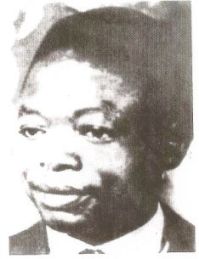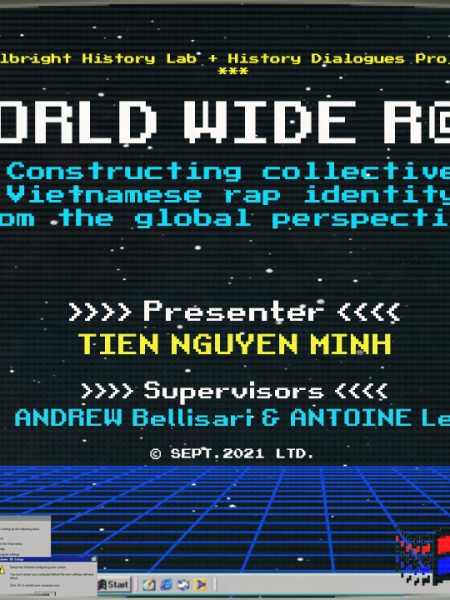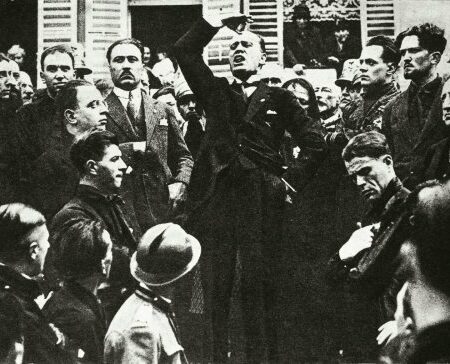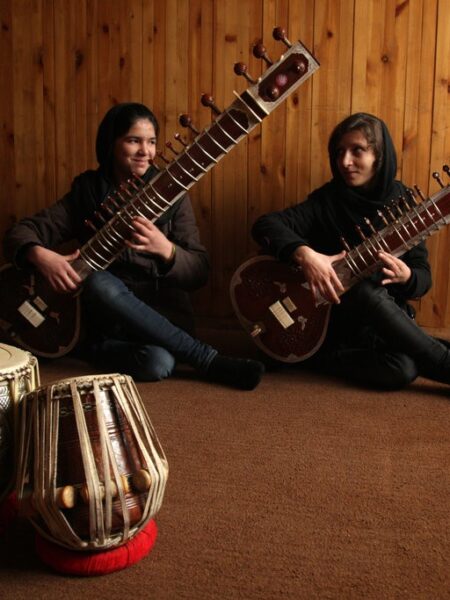
Introduction
The 21st century has seen a number of dynamic and unprecedented changes, many of which are worthy of research. One of such topics is the political and ethnic conflicts in Myanmar, which have had a profound impact on the country’s history and society. This research focuses on the period from 1947 to 2023, a time of great upheaval in Myanmar. During this period, the country experienced independence, the rise of the military junta, and the recent coup. This project is interested in exploring the relationship between these events and the ethnic conflicts in Myanmar.
I would like to express my gratitude to Princeton and Parami for giving me the opportunity to participate in this learning journey. I would not have been able to complete this final paper without the extensive dedication and support of my instructors and administrators. I believe that this research is important because it can help us to understand the root causes of the ethnic conflicts in Myanmar. By understanding these causes, we can better address the challenges facing the country and work towards a more peaceful future.
Objectives
- Objective 1: To increase awareness in Myanmar of the intensification of severe
conflicts that have been exacerbated by the cumulative effects of the 2021 coup. - Objective 2: To examine the history of stalemate and deadlock in Myanmar’s
democratization and federal transition process.

1. Geography and Facts
Myanmar is a country in Southeast Asia, bordered by China to the north, Laos and Thailand to the east, Bangladesh and India to the west, and the Andaman Sea and the Indian Ocean to the south. It has a total area of over 600,000 square kilometers and a population of over 55 million people.
The people of Myanmar are ethnically diverse, with over 135 different ethnic groups
represented in the country. The most common language is Burmese, but English is also widely spoken. The official religion of Myanmar is Buddhism, but there are also significant populations of Hindus, Muslims, and Christians.
Myanmar has a GDP of $1.3 trillion and a human development index of 0.6333. The country has been in a state of civil war for over 75 years, and there have been three major coups that happened in 1962, 1988 and 2021, respectively.
Myanmar is a strategically important country due to its location on the northern rim of the
Indo-Pacific region. This location has made the country a target for foreign intervention, and it
has contributed to the country’s political instability.
2. Research’s Question and Argument
The argument of this research is to answer the question:
“Why doesn’t Federalism work for Myanmar until now?”
The author wants to highlight the challenges that federalism has faced in Myanmar throughout the 20th and 21st centuries. These challenges include:
- A long history of ethnic conflict, dating back to the days of imperial warring states and aggressions wars with neighboring countries.
- Trust issues between the three dominant power holders in Myanmar: the military, the government, and ethnic armed organizations (EAOs).
- A lack of political will and technical capacity to implement federalism.
- A lack of an inclusive mechanism to address poverty alleviation and quality education.
The author argues that these challenges have hindered the progress of federalism in Myanmar and may even set back the country’s development.

3. Methodology and Biography of Interviewees’ Roles
Due to the potential risks and time constraints, the author adopted two major methodologies:
- Oral history interviews via tele-conversations with 6 pre-defined survey questionnaires.
- Archival research and document analysis from available sources, including reliable references and digital archives.
The author interviewed major stakeholders who participated in the early democratic reform and federal transition beyond 1988 to the present, serving as negotiators, EAO leaders, CSO leaders, and technical facilitators.
4. Background and Historical Timeline of Myanmar
Myanmar has a long and complex history, dating back to the first millennium BC. The first major kingdom in the region was the Pyu city-states, which were established in the Irrawaddy River Valley. In the 9th century, the Bamar people established the Pagan kingdom, which became a major power in Southeast Asia. The Pagan Kingdom reached its peak in the 12th century, but it was conquered by the Mongols in the 13th century. Several warring states emerged after the fall of Pagan, but the Taungoo dynasty reunited the country in the 16th century. The Konbaung dynasty ruled Myanmar from the 18th to the early
19th century, and it was the largest empire in mainland Southeast Asia at its height. In the 19th century, Myanmar was colonized by the British. The British annexed the country after three Anglo-Burmese wars, and ruled it as part of British India.
During World War II, Myanmar was occupied by the Japanese. After the war, Myanmar gained independence in 1948. However, the country was soon plunged into civil war, as ethnic minority groups fought for greater autonomy. In 1962, the military seized power in a coup d’état. The military ruled Myanmar for the next 50 years, during which time the country was isolated from the rest of the world. In 2011, the military began to loosen its grip on power. In 2015, Aung San Suu Kyi’s National League for Democracy (NLD) won a landslide victory in the general election. However, the military still retains a great deal of power under the 2008 constitution. In 2021, the military staged a coup d’état and arrested Aung San Suu Kyi and other NLD leaders. The coup has sparked widespread protests and international condemnation.
5. Who are the key Stakeholders in Myanmar Federalism Transition?
The roles of key stakeholders in Myanmar federalism transition history are complex and have evolved over time. However, some of the key roles that these stakeholders have played include:
- The Military : The military is the most powerful institution in Myanmar and has a veto over any constitutional changes. It has been reluctant to give up power and has been accused of human rights abuses. However, it has also expressed support for federalism in principle and is willing to work with the government to implement a federal system.
- The Government : The government, led by the National League for Democracy (NLD), won a landslide victory in the 2020 elections and pledged to implement federalism. However, it has faced challenges from the military’s coup in 2021 and from EAOs. The government has also been criticized for its handling of the COVID-19 pandemic and for its human rights record.
- Political parties : Political parties have a key role to play in Myanmar’s federalism transition. They have been working together to build a consensus on the future of the country and to represent the interests of all of the people to ensure that the transition is fair and inclusive.
- Ethnic Armed Organizations(EAOs) : Ethnic armed organizations (EAOs) represent the interests of ethnic minorities in Myanmar and have been fighting for greater autonomy for their regions for many years. They are reluctant to disarm
and join the political process because they lack trust in the military and government, and because past attempts at dialogue have mostly ended in a political deadlock that has dragged on for years. - Civil Society Organizations(CSOs): CSOs play a watchdog role in Myanmar politics. They monitor the transition process and hold the government and other stakeholders accountable. CSOs have also played a role in educating the public
about federalism and in promoting dialogue and understanding between different stakeholders. - International organizations (IOs): International organizations have provided support and technical assistance to Myanmar in the past and will likely play a similar role in the federalism transition process. They have provided expertise and resources that Myanmar may not have on its own. They also help to build consensus among the country’s stakeholders and to promote a peaceful and inclusive transition.
6. Power and Influence Analysis of key Stakeholders for Myanmar Federalism Transition

EAO (Ethnic Armed Organization), CSO (Civil Society Organization), IO (International Organization), NCA (Nationwide Ceasefire Agreement)
The Military
The military is the longest-standing stakeholder in Myanmar’s political landscape. It has a high level of power, but its influence is limited by its conservative institutional culture. The military’s vision for federalism is still in its infancy, and it is uncertain whether it will support a decentralized or centralized model. The military’s main challenges are the fear of separatism and the need to maintain its status quo in the future political process.
The Government(NLD)
The NLD is facing some challenges in the federal transition process, but it is still the most powerful and influential political party in Myanmar which has a strong track record of advocating for democracy and human rights. The NLD and the military have a long history of conflict. This makes it difficult for them to work together on the federal transition process. There
are different visions of federalism in Myanmar, and the NLD will need to find a way to compromise with other stakeholders.
Political Parties
Political parties are the most resilient entities in Myanmar’s political landscape. They have been struggling for decades for democracy, self-determination, equality, and human rights. Many of these parties have been traumatized by repressive regimes, and they have a liberalized ideology. Political parties generally prefer a decentralized model of federalism, but
they are concerned that giving too much power to the ethnic regions could lead to the inability of the central government to function effectively.
Ethnic Armed Organizations (EAOs)
EAOs are the most marginalized stakeholders in Myanmar’s political landscape. They have been fighting for self-determination and equality since independence. EAOs generally prefer a decentralized model of federalism, as they believe that this is the best way to protect their ethnic and cultural identity and promote social and economic development. However, EAOs are concerned that they will have less bargaining power in the power-sharing process if they are not given a significant role in the federal government.
Civil Society Organizations (CSOs) and International Organizations (IOs)
CSOs and IOs have played a supportive role in Myanmar’s democratization and federalism transition. They have a common vision for a decentralized model of federalism, and they believe that this is the best way to promote peace, stability, and development in Myanmar. However, CSOs and IOs are concerned that the long-term deadlock and stagnated political
woes in Myanmar could derail the federalism transition process.
7. Federal Transitional Development Status of The First Panglong conference(1947) Vs. The Three Coups(1962/1988/2021)

The federal transitional development status in Myanmar has undergone four major changes since 1947. These are depicted from the survey, along with the perspectives of those surveyed.
● 1947 – The Panglong Agreement was signed, establishing a federal union of Burma.
● 1962 – The military coup d’état brought an end to the federal transition process.
● 1988 – The military coup d’état consolidated the military’s power and further stalled the federal transition process.
● 2021 – The military coup d’état has further derailed the federal transition process.
According to the survey data from this research, the interviewees/Negotiator gave the 1947 Panglong Agreement a score of 50%, the EAO leader gave it a score of 40%, and the CSO leader gave it a score of 30% 33 (see Table 1). This indicates that the interviewees generally view the 1947 Panglong Agreement as a significant milestone in the development of federalism in Myanmar. However, the 1962 coup and the 1988 coup both set back the federal transition process, with the interviewees giving both events a score of 0. This suggests that the interviewees believe that the federal transition process has not made much progress since 1962. According to the interviewees, the 2021 Coup severely impacted the development status in the
history of federalism transition in Myanmar. Thus, all of the interviewees agree that the military’s power has been a major obstacle to the federal transition process.
8. Words from the Interviewees
After conducting an oral history interview with U Hla Maung Shwe, The Negotiator of the NRPC (National Reconciliation and Peace Center) for the Myanmar Federalism Transition, the key take-away words pertaining to the research topic were that the Negotiator believed that a federal state will eventually emerge in Myanmar, but was unable to predict when this would happen. The Negotiator was concerned about the negative attitudes that persist among some stakeholders, which he believed continues to prevent progress.
After conducting an oral history interview with EAO (Ethnic Armed Organization) Leader U Myo Win, Vice Chairman of ABSDF(All Burma Student Democratic Fronts) for the Myanmar Federalism Transition, the key take-away words pertaining to the research topic were that the EAO leader believed that the lack of capacity among stakeholders was another major obstacle to the federal transition process. He also believed that the military’s unwillingness to compromise continues to be a major problem.
After conducting an oral history interview with CSO (Civil Society Organization) Leader U Kyaw Lin Oo, Political Analyst (Peace Commision) for the Myanmar Federalism Transition the key take-away words pertaining to the research topic were that the CSO leader believed that the military’s perception of federalism as a threat to national unity is a major obstacle to the federal transition process. In order for the federal transition process to be successful, all stakeholders must find a viable common ground to work together. The military must also be willing to relax its principal doctrines of over concerned on the
Three National Causes.
9. Analysis
The author’s research and interviews have revealed three key findings about why federalism
has not worked in Myanmar so far:
Finding 1: Loss of trust-building mechanisms
The stakeholders involved in the federalism transition process have been unable to find a common ground to continue the dynamic of political dialogue and transitional process. This has led to a loss of trust and a stalemate in the peace process.
Finding 2: Lack of technical capacity
The key players in the respective institutions have constraints on the human capital, such as understanding of subject matter, visionary leadership skills, and technical competency. This has made it difficult to achieve positive impacts in the federalism transition process.
Finding 3: Lack of willingness to compromise
Negotiation and compromise culture have been missing elements in Myanmar society for quite a while. This has paved the way for confrontations and defiance, which have further hindered the federalism transition process. These findings suggest that in order for federalism to work in Myanmar, the stakeholders involved must be able to find a common ground, build trust, and develop the technical capacity to implement the process. They must also be willing to compromise and work together for the future of Myanmar.
10. Conclusion
Myanmar is facing a number of challenges, including political turmoil, economic crisis, and migration and refugee crises. These challenges have led to the country being on the brink of becoming a failed state. Neighboring countries are closely monitoring the situation and are concerned about the potential geopolitical threat that Myanmar could pose if the situation does not improve.
The country’s long history of military rule and the diversity of its ethnic minority groups have made it difficult to implement federalism in Myanmar. However, federalism could offer a viable solution to the country’s challenges. It could provide a framework for an authentic democracy, diversity, inclusion, and prosperity. In order for federalism to be successful in Myanmar, the following challenges must be overcome:
- The military must be willing to relinquish power and share it with the ethnic minority groups.
- The ethnic minority groups must be willing to compromise and work together for the common good.
- The country must develop the technical capacity to implement federalism.
If these challenges can be overcome, federalism could offer a bright future for Myanmar. It could help to achieve peace, stability, and prosperity for all of its people.
ANNEX: The Questionnaire questions set for the Oral History Interview
- Please advocate for your own interpretation of federalism.
- Please explain to me a brief history of federalism in Myanmar.
- How far have we come in the Myanmar federal journey so far, and how much has been
completed as of now? - What are the major challenges facing the process, both internally and externally?
- What is your opinion on the statement that “federalism is the ultimate way out, a one-size-fits-all model for Myanmar’s complex and multifaceted crisis”?
- Please share your general opinion on the political, social, economic, and humanitarian challenges facing Myanmar.
Title : Why Federalism Doesn’t Work for Myanmar Until Now
Student : Kyaw Lwin Moe (KLM)
Email : [email protected]
Date : 9 August ,2023.







